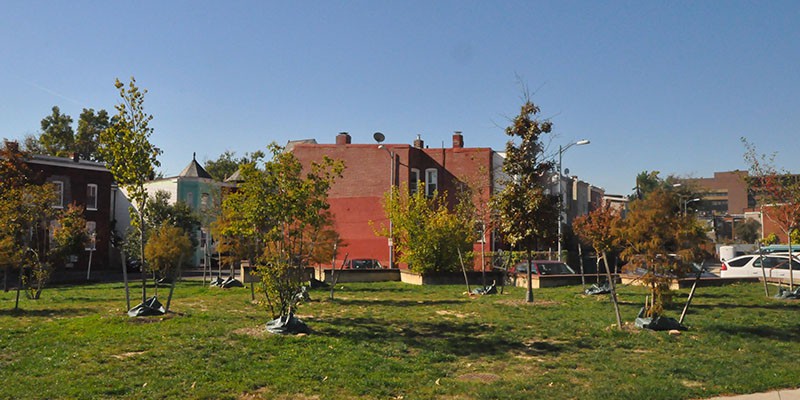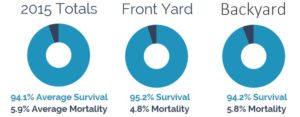THE LEAFLET

Survival Study Part 2: Space Type
Where do trees flourish? Is it in parks, road medians or tree boxes?
This week we take a look at the survival rate based on planting space type so we can better understand where trees do well and where we might need to focus more maintenance and monitoring efforts.

Trees located in front yards have a 1 percent higher survival rate compared to their back yard comrades.
Why does this happen? A few factors could be at play, one being how often a person comes into contact with a front yard as opposed to backyard trees. In this case, frequent visual contact may mean better upkeep.

A planting strip is the grassy area between the sidewalk and the road, while a road median is the grassy area dividing two sides of car traffic.
Both of these space types provide Casey Trees with great opportunity for beautifying busy intersections or creating a natural barrier between the road and pedestrians. You can see that trees in planting strips fare much better than those in road medians.
One possibility for this difference may be accessibility – it is much easier to care for a tree along the sidewalk instead of in between lanes of traffic.
Although we can make assumptions about why survival rates differ among space types, we did not find any statistically meaningful difference between them. Because space type alone is not a good predictor of overall survival, we will be digging further into the data to better understand the other factors that may help explain these difference.
Stay tuned for the next update on how root type affects survival.
Missed last week’s article about species survival rates or curious to know how we collect the data for this series? Check it out.